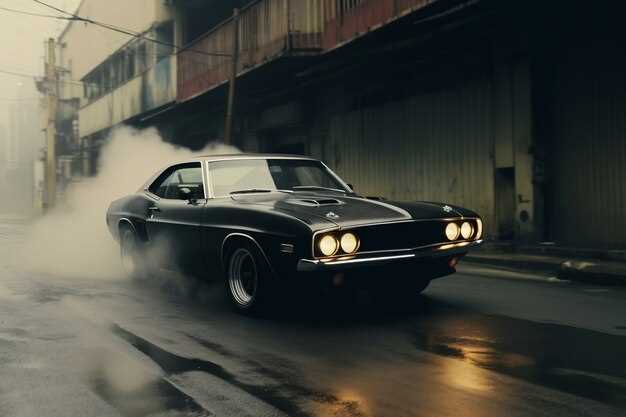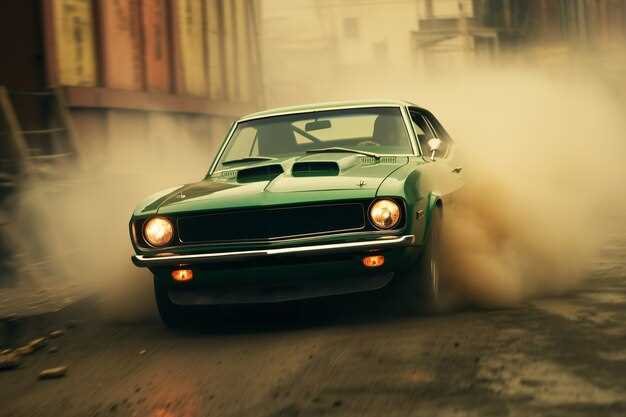
The American muscle car, a symbol of raw power and freedom, rose to prominence in the 1960s and 1970s, captivating enthusiasts and casual drivers alike. These high-performance vehicles, characterized by their large engines and aggressive designs, offered an exhilarating driving experience that epitomized the spirit of American automotive culture. Brands like Ford, Chevrolet, and Dodge became icons, delivering models that would define a generation and ignite a love affair with speed and performance.
However, the very traits that marked the muscle car’s glory days would ultimately contribute to its decline. The oil crises of the 1970s, coupled with tightening emissions regulations and shifting consumer preferences towards fuel efficiency and practicality, forced manufacturers to rethink their approach to automotive design. As safety and environmental concerns took precedence, the once roaring engines of muscle cars were silenced, leading to a dramatic transformation in the automotive landscape.
This article delves into the intricate history of American muscle cars, exploring their meteoric rise during the golden age of automotive innovation and the subsequent challenges that led to their decline. By examining the political, economic, and cultural factors that influenced this iconic segment, we aim to provide a comprehensive understanding of how these legendary vehicles went from dominating the roads to becoming cherished relics of the past.
How Market Trends Shaped the Popularity of Muscle Cars in the 1960s

The 1960s marked a pivotal decade for the American automotive industry, characterized by economic prosperity and a cultural shift towards performance-oriented vehicles. The post-World War II boom led to increased disposable incomes and a growing population of young drivers eager for stylish and powerful cars. This demographic shift created a ripe market for manufacturers to introduce high-performance vehicles, which would later be defined as muscle cars.
In response to consumer demand for speed and style, automakers began to develop models that combined lightweight bodies with powerful V8 engines. This trend was bolstered by advancements in engineering, allowing manufacturers to produce more efficient and robust powertrains. Brands like Ford, Chevrolet, and Pontiac capitalized on this trend, releasing iconic models that included the Mustang, Camaro, and GTO, respectively. These vehicles not only offered impressive horsepower but also became cultural symbols of freedom and rebellion.
Furthermore, the competitive landscape of the era drove innovation. Automakers engaged in a horsepower race, where they sought to produce the most powerful engines to attract young buyers. Marketing campaigns emphasized the thrill of driving, with slogans and advertisements that appealed to a sense of adventure and individuality. Local drag racing and the rise of car culture also fueled interest, as young enthusiasts gathered to showcase their muscle cars and compete against each other.
However, the popularity of muscle cars in the 1960s was not solely driven by performance metrics. Style was equally important. Automakers designed vehicles with bold aesthetics that resonated with the youth culture of the time. Eye-catching colors, sleek lines, and aggressive stances became synonymous with muscle cars, setting them apart from traditional sedans and family vehicles.
While the 1960s were a golden age for muscle cars, external factors began to emerge that would challenge their popularity. The late decade saw rising insurance costs and fuel prices, which made these gas-guzzling vehicles less appealing to a broader audience. Additionally, increasing concerns about safety and emissions began to prompt regulatory changes that would later affect production.
In summary, the rise of muscle cars in the 1960s was significantly shaped by market trends, including economic prosperity, demographic shifts, and a cultural penchant for performance and style. Automakers adeptly navigated these factors, creating vehicles that not only met consumer demands but also captured the spirit of a generation. However, as the decade came to a close, the seeds of decline were being sown, setting the stage for the challenges that would follow in the 1970s.
What Factors Led to the Decline of Muscle Cars in the 1970s

The decline of muscle cars in the 1970s can be attributed to several interrelated factors that transformed the automotive landscape in the United States. One significant factor was the oil crisis of 1973, which led to skyrocketing fuel prices. As a result, consumers began to prioritize fuel efficiency over raw power and performance, diminishing the appeal of gas-guzzling muscle cars.
Additionally, increasing insurance costs for high-performance vehicles made muscle cars less financially viable for many buyers. Insurance companies recognized the higher risk associated with powerful cars and adjusted their policies accordingly, which deterred potential customers.
Regulatory changes also played a crucial role in the decline. The introduction of stricter emission standards and safety regulations in the early 1970s forced manufacturers to redesign their vehicles. Many muscle cars, originally built for speed and power, struggled to comply with these new requirements, leading to a reduction in their performance and overall desirability.
The changing consumer preferences during this period further contributed to the decline. Buyers began gravitating towards more compact and practical vehicles, influenced by both economic realities and evolving lifestyle choices. Automakers responded by shifting production focus to smaller cars, effectively sidelining the muscle car segment.
Finally, the competitive landscape itself changed as foreign automakers gained traction in the U.S. market. Brands like Honda and Toyota introduced smaller, fuel-efficient models that appealed to budget-conscious consumers. This competition further eroded the muscle car’s market share, leading to fewer offerings and ultimately the decline of this iconic American automotive segment.
Can Modern Muscle Cars Compete with Today’s Performance Vehicles?
Modern muscle cars have made significant strides in performance, technology, and design, allowing them to hold their own against today’s high-performance vehicles. Manufacturers have embraced advanced materials, turbocharging, and cutting-edge suspension systems to enhance the driving experience, making these cars more capable than their predecessors.
One of the key factors that allows modern muscle cars to compete is the integration of powerful engines with enhanced fuel efficiency. For example, vehicles like the Ford Mustang and Chevrolet Camaro now offer high-output V8 engines, as well as turbocharged four-cylinder options that deliver impressive horsepower while maintaining better fuel economy. This versatility allows them to attract a broader range of consumers, from traditional muscle car enthusiasts to eco-conscious drivers.
In terms of handling and performance dynamics, modern muscle cars have made notable improvements. Manufacturers have invested in technology such as independent rear suspensions, adaptive dampers, and advanced traction control systems. These enhancements contribute to improved stability, responsiveness, and overall driving enjoyment, bringing them closer to the capabilities of European sports cars and high-performance sedans.
Furthermore, the digital landscape of modern muscle cars cannot be overlooked. Advanced infotainment systems, driver-assistance technologies, and connectivity features have transformed the driving experience. Many competitors now include features such as performance data monitoring, launch control, and customizable driving modes, leveling the playing field between traditional muscle cars and contemporary performance vehicles.
However, while modern muscle cars are competitive, some performance vehicles still have advantages, particularly in areas like track capabilities, aerodynamic efficiency, and overall refinement. Supercars and purpose-built performance vehicles often command a different level of engineering focus that might outmatch muscle cars in specific scenarios. Thus, the competition can vary based on the particular model and performance goals.
In conclusion, modern muscle cars have successfully adapted to the evolving automotive landscape and demonstrate impressive performance that can compete with today’s performance vehicles. Their blend of traditional power with modern technology makes them a formidable contender, capturing the spirit of American muscle while appealing to a new generation of car enthusiasts.
